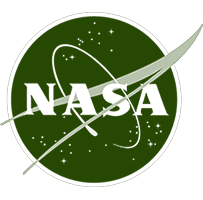NASA Approves Mission to Seek Nearest Stars, Brightest Galaxies

Artist's concept of Wide-field Infrared Survey Explorer spacecraft.
News • October 6th, 2004
A new NASA mission will scan the entire sky in infrared light in search of nearby cool stars, planetary construction zones and the brightest galaxies in the universe.
Called the Wide-field Infrared Survey Explorer, the mission has been approved to proceed into the preliminary design phase as the next in NASA's Medium-class Explorer program of lower cost, highly focused, rapid-development scientific spacecraft. It is scheduled to launch in 2008.
Like a powerful set of night vision goggles, the new space-based telescope will survey the cosmos with infrared detectors up to 500,000 times more sensitive than previous survey missions. It will reveal hundreds of cool, or failed, stars, called brown dwarfs, some of which may lie closer to us than any known stars.
"Approximately two-thirds of nearby stars are too cool to be detected with visible light," said Principal Investigator Dr. Edward Wright of the University of California, Los Angeles, who proposed the new mission to NASA. "The Wide-field Infrared Survey Explorer will see most of them."
The telescope will also provide a complete inventory of dusty planet-forming discs around nearby stars, and find colliding galaxies that emit more light - specifically infrared light - than any other galaxies in the universe. In the end, the survey will consist of more than one million images, from which hundreds of millions of space objects will be catalogued.
"The mission will complete the basic reconnaissance of the universe in mid-infrared wavelengths, providing a vast storehouse of knowledge that will endure for decades," said Dr. Peter Eisenhardt, project scientist for the mission at NASA's Jet Propulsion Laboratory, Pasadena, Calif. "This catalogue of data will also provide NASA's future James Webb Space Telescope with a comprehensive list of targets."
JPL will manage the Wide-field Infrared Survey Explorer at a total cost to NASA of approximately $208 million. William Irace of JPL is the project manager. The cryogenic instrument will be built by the Space Dynamics Laboratory, Logan, Utah, and the spacecraft will be built by Ball Aerospace and Technologies Corporation, Boulder, Colorado. Science operations and data processing will take place at the JPL/Caltech Infrared Processing and Analysis Center, Pasadena. Calif. JPL is a division of Caltech.
More than 70 U.S. and cooperative international scientific space missions have been part of NASA's Explorer program. The missions are characterized by relatively moderate cost, and by small- to medium-sized missions that are capable of being built, tested and launched in a short time interval compared to the large observatories. NASA Goddard Space Flight Center, Greenbelt, Md., manages the Explorer program for the Science Mission Directorate, NASA Headquarters, Washington.
2004-252
Whitney Clavin
(818) 354-4673




